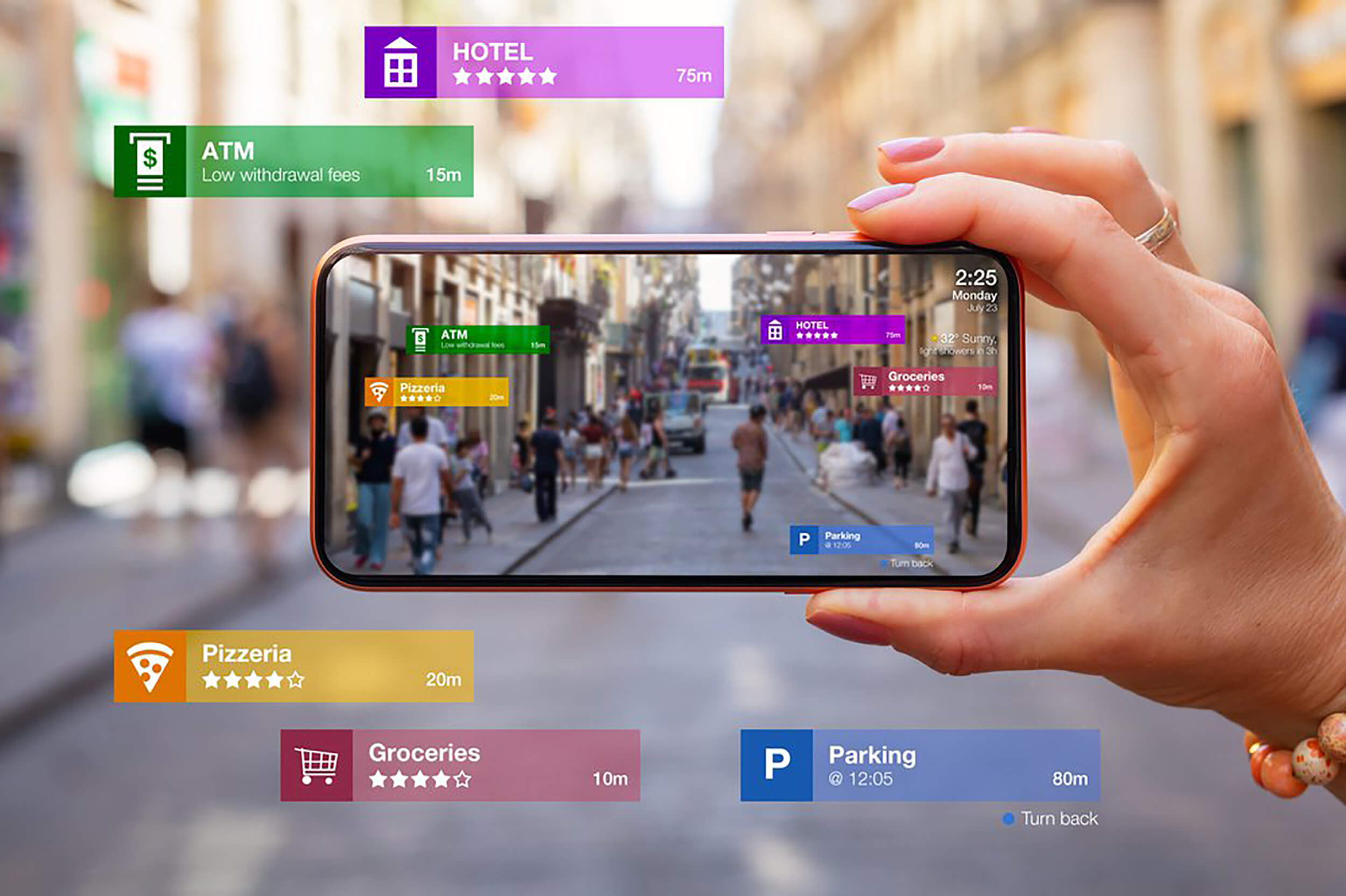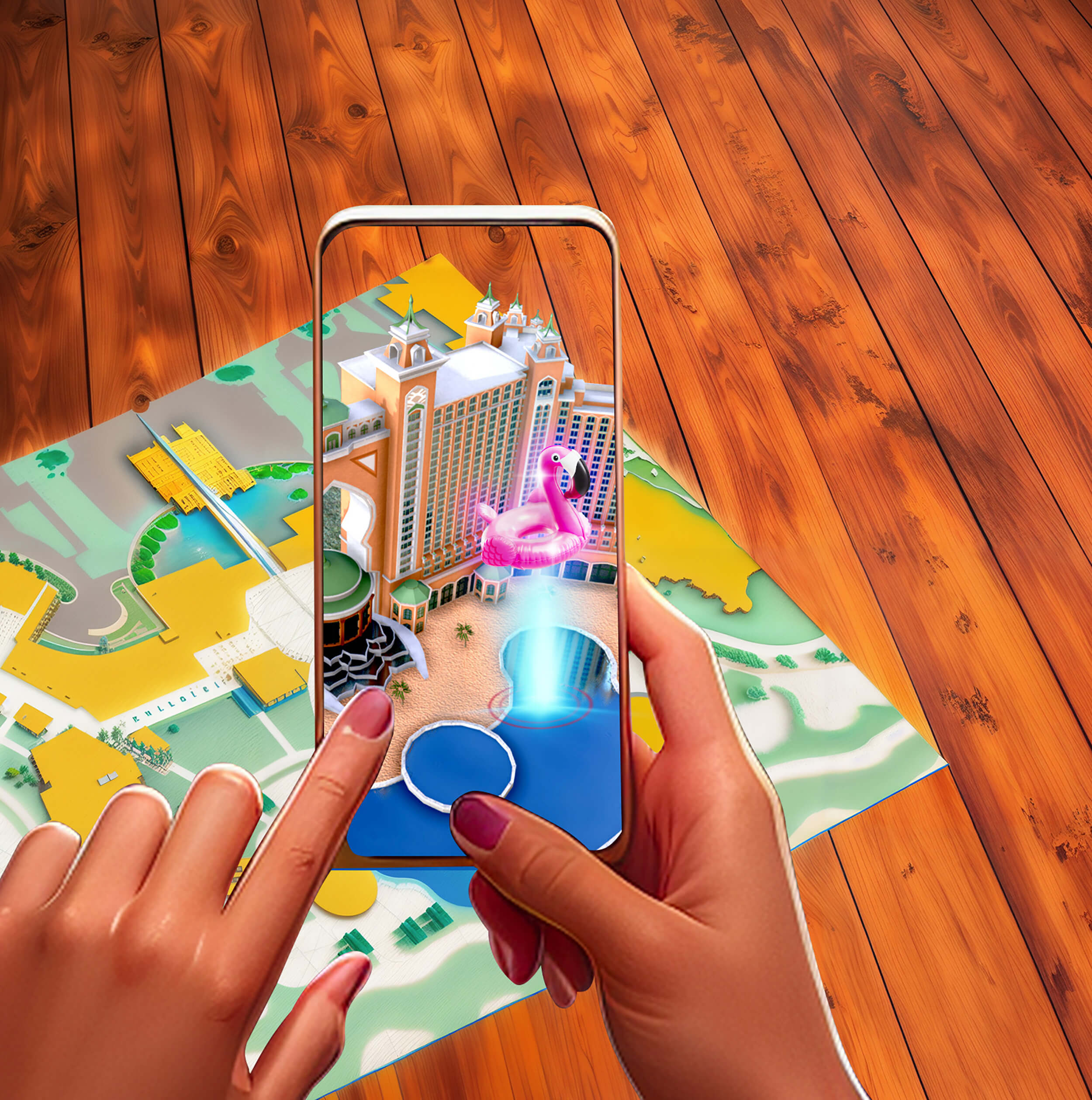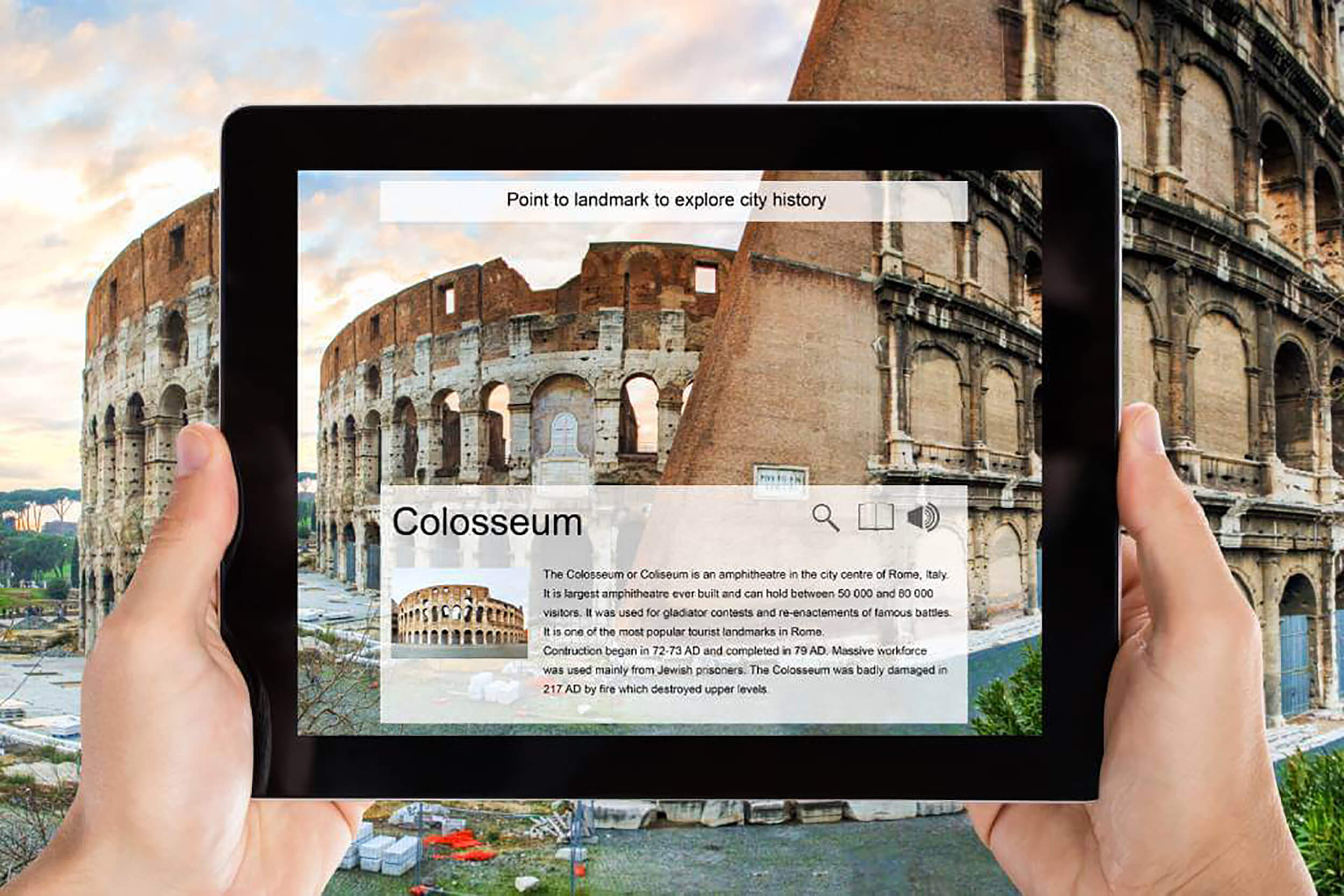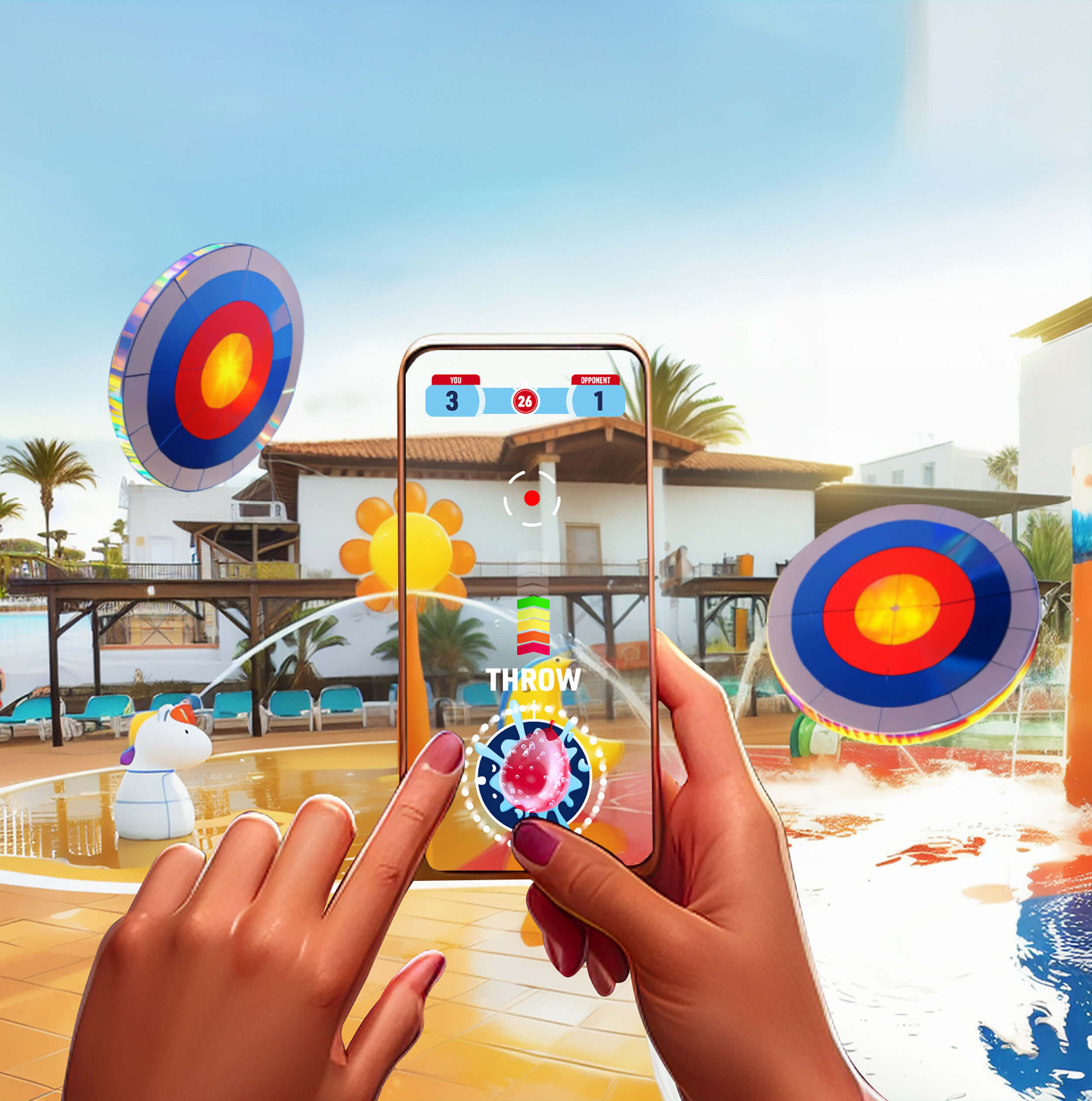

Augmented reality (AR) is revolutionizing the way we travel and interact with the world. From interactive maps and personalised recommendations to remote assistants and translation apps, the potential for AR usage in tourism is boundless. The virtual tourism market alone is set to grow at a compound annual growth rate (CAGR) of 30.2% between 2023 and 2028, to reach a valuation of $23.5 billion. There is no doubt that augmented reality is reshaping the tourism industry, empowering brands to remain relevant in a competitive and changing market space.
With informative overlays and augmented attractions, this transformative technology seamlessly blends the physical and digital to offer new immersive experiences. Augmented reality in tourism doesn’t only enhance customer satisfaction but enables next-level marketing and opens up new revenue streams for travel businesses.
Let’s explore the many ways that the use of augmented reality in travel and tourism can shake up your business with remarkable competitive advantages.
Key Takeaways
As the quality of augmented reality improves and increased accessibility leads to lower implementation costs, AR is becoming increasingly popular as a travel tool. Whether it’s a museum visit or a trip to a foreign country, AR promises to change, improve, and expand the very nature of travel and tourism.
Although the experience of travel is proverbially priceless, the truth is that it can put quite a dent in your client’s pocket. An augmented reality travel guide can help ensure that the destination your clients spend their money on is just as beautiful as the brochure promises.
Using AR, tourists can explore famous landmarks, interactive museums, and natural wonders from the comfort of their own homes. They can view 3D models of iconic buildings like the Eiffel Tower or the Taj Mahal and even take virtual walking tours through bustling city streets or far-flung wilderness. An example of this is the travel app Antarctic Heritage Trust AR, which takes users on an expedition to Antarctica. Here a user can explore the icy landscape with 360º images and videos and access artefacts from the buildings.

With competition fiercer than ever, the key to standing out is providing a high quality, uniquely personal experience. In fact, 63% of customers say they will stop using a brand if it uses poor personalization tactics.
With ready-made packages and all-inclusive deals, traditional travel itineraries and activities are often a one-size-fits-all approach. But what if you could tailor every part of your customer’s journey, certain that they will love what they get? You can. With AR integrations and features, your clients can book a room after virtually browsing multiple options, seamlessly navigate points of interest to them, and enjoy interactive, tailored itineraries.
Using AR, customers can leave reviews and ratings for places they visit in real time. This feedback is invaluable for travel and hospitality businesses and can help to enhance communication with your audiences. You could also consider implementing useful features like AR avatars or virtual representatives to guide customers through their travel experiences. These avatars can provide assistance, suggest activities, and answer common questions, improving communication and customer support.
AR features can captivate visitors, streamline the travel experience and drastically enhance visitor interactions. From informative overlays to real-time translations, these tools can drive engagement, confidence and ultimately consumer spending.

AR can also help travel and tourism businesses to move into new markets and expand their offerings in ways that differentiate them from their competitors. Here are some opportunities for building new revenue streams using AR:
Users can explore destinations virtually, navigate attractions, and even interact with virtual elements in real time. This technology opens up opportunities to generate revenue through augmented tours, ticket sales, and partnerships with local businesses.
AR technology can transform traditional souvenir shopping. Using AR-enabled apps or devices, tourists can virtually try on clothing, accessories, or test products before purchase.
This not only enhances the shopping experience but provides a unique way for travel companies to generate additional revenue. They can partner with local retailers to offer exclusive discounts and promotions for AR shoppers. This creates a win-win situation for both travelers and businesses.
Smartify’s eShop platform, for instance, lets users access art from galleries like The National Gallery in London and buy prints, souvenirs, mementos, and gifts directly from their smartphone.
With AR-enabled devices, marketers can create interactive and engaging advertisements that blend seamlessly with real-world environments. Featuring creative design work and animation, these campaigns extend your brand into the digital layer and can be highly impactful.
With integrated game-like features, users can participate in interactive challenges, complete quests, and earn rewards as they explore different destinations. Jurassic World Alive is a prime example of this. The app invites users to find virtual dinosaurs in different real-world locations, enabling them to learn about the ancient creatures at the same time.
Applying this concept in various settings can make travel more engaging and educational. It also provides opportunities for travel and tourism companies to generate additional revenue. They can offer premium game experiences, extra features, or in-game purchases and upgrades.

By providing virtual tours of destinations, cruise ships, and leisure facilities, travel agents and marketers give potential customers a sneak peek into holiday bliss. This can increase interest and likelihood of booking.
AR also makes it easy for travelers to book day tours on demand. They can browse and engage in activity options from within an app—and use the same app to instantly book the activity. This is especially useful for weather-dependent activities or to avoid long lines.
Leveraging augmented reality in hospitality has the power to turn your customer experiences—and your bottom line—around. AR tools can reduce operational, training, and administrative costs, improve the guest experience, and drive more bookings.

Augmented reality is transforming the tourism industry and shaping the future of travel experiences. It holds immense potential to offer travellers a whole new way to explore and engage with the world around them.
Rock Paper Reality can help you take full advantage of this technology to drive growth in your travel or tourism business. From Fortune 500s to start-ups, we’ve been helping companies leverage the latest technology to drive growth strategies for over a decade.
Our team of highly skilled innovators looks forward to bringing your augmented reality vision to life. Let’s chat.
Sign up to our newsletter for exclusive updates and content, delivered directly to your inbox.
You can opt out at any time, please view our Privacy Policy for more information on how to unsubscribe.